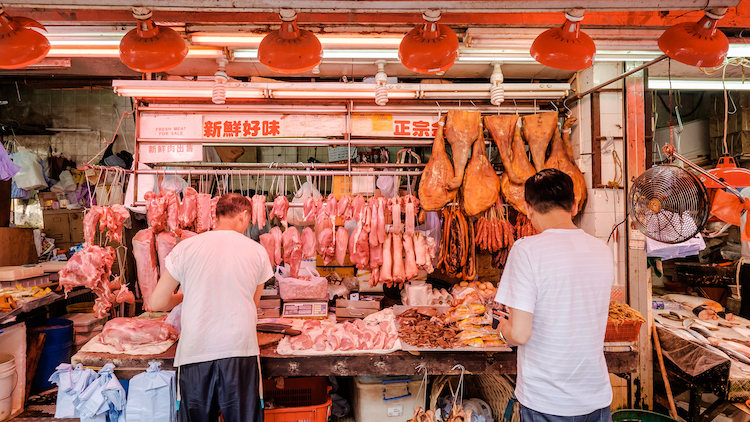
Not all that long ago, meat was not a major component in the Chinese diet. It wasn’t until the 1980s when meat production and consumption in the Asian country began to soar. According to data from the United Nations Food and Agriculture Organization, dietary calories supplied by meat in China went from 4% to 19% between the 1960s and the 2000s.
Meat production also rose sharply during that time frame, reaching its peak in 2014. The African swine fever epidemic dramatically cut China’s hog population in 2019. Pork production rebounded, but other sources of protein face challenges today. Rising feed costs, lack of land, and disease hurdles impact beef and poultry production, preventing China from keeping pace with its meat needs.
Recent United States Department of Agriculture (USDA) data shows that China remained the world’s largest meat importer in 2022. Although imports were down from the year before, China still imported 43% more meat than Japan, the world’s second-biggest importer.
China’s population is what makes it a destination for so many imports, not a lack of production effort. In the USDA report, “China’s Meat Consumption: Growth Potential,” it was noted that China was the world’s largest producer of pork, the second-leading producer of chicken, and the third-leading producer of beef.
Even though meat consumption has grown, the Chinese diet does not come close to countries like the United States and Argentina, where people eat twice as much meat annually. The Chinese average is just under 119 pounds of meat consumption a year; in the United States, per capita consumption is greater than 265 pounds.
While these numbers may point to growth potential in meat consumption, the report’s authors also shared factors that may put a cap on intake. For one, the rising incidence of conditions such as obesity and heart disease have prompted health experts to advise against meat consumption. Concerns about environmental impacts of agriculture and animal welfare may lead consumers to make different food choices as well. Still, strong import demand from this populous Asian nation makes it an export opportunity for the United States and other meat-producing countries.








